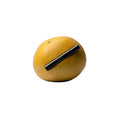

NO NASTIES PROMISE
Our No Nasties Promise is a list of ingredients that we will never use in our products. This includes synthetic fragrance, denatured alcohol and the over 1,400 chemicals banned or restricted for use in personal care products in the European Union plus additional chemicals screened by Vahy and found to be of concern.
Below is our No Nasties list along with an indication of what these ingredients have been associated with:
INGREDIENTS |
USED FOR |
FOUND IN |
ASSOCIATED WITH |
|
Ammonium Lauryl Sulfate (ALS) |
Surfactant |
Shampoos, bath products, hair colour, makeup, deodorants, perfumes and shaving preparations |
Carcinogens, neurotoxicity, organ toxicity, skin irritation and endocrine disruption |
|
Animal by-products |
Certain fragrance notes |
Perfume |
Cruelty to our furry friends |
|
Benzalkonium Chloride |
Disinfectant and preservative |
Sunscreens and moisturisers |
Skin, eye and respiratory irritation and allergies |
|
Benzophenone-1, Benzophenone-2 |
Preventing UV light from damaging scents and colours |
Perfumes, soaps, lip balm, shampoo, moisturisers |
Hormone disruption, irritation and carcinogens |
|
Butylated hydroxyanisole (BHA) and Butylated Hydroxytoluene (BHT) |
Preservative |
Perfume, lipsticks, deodorants, makeup |
Hormone disruption, irritation and carcinogens |
|
Butoxyethanol |
Surfactant |
Perfume, hair products, nail products |
Irritation, organ toxicity, carcinogen and hormone disruption |
|
Coal Tar |
Colourant |
Hair dye, shampoo, lotions |
Carcinogens |
|
Denatured Alcohol (Alcohol Denat) |
Alcohol with one or more toxic chemicals added to it to make it unfit for consumption |
The main ingredient in most perfumes |
Irritation, skin toxicity, hormone disruption, neurotoxicity |
|
Ethylenediaminetetraacetic acid (EDTA) |
Binding agent for product stability |
Hair colour, moisturisers. |
Enhances penetration into the skin so other chemicals may enter your system |
|
Ethanolamines (MEA/DEA/TEA) |
Surfactants and pH adjuster |
Perfumes, hair dyes, makeup, sunscreens, paint, pharmaceuticals |
Irritation, organ toxicity, carcinogen and hormone disruption |
|
Diazolidinyl urea, DMDM hydantoin, Imidazolidinyl urea |
Preservative antimicrobial |
Makeup, aftershave, hair and skin products |
Releasing formaldehyde, carcinogens, asthma, neurotoxicity and developmental toxicity |
|
Formaldehyde |
Preservative antimicrobial |
Shampoo, body wash, bubble bath, hair gel |
Carcinogens, asthma, neurotoxicity and developmental toxicity |
|
Hydroquinone |
Skin-lightening chemical |
Skin cleansers, moisturisers, hair conditioners |
Carcinogens, organ toxicity, and respiratory tract irritation |
|
Methylisothiazolinone and methylchloroisothiazolinone |
Preservative |
Shampoo, conditioner, body wash, lotion |
Allergies, inhalation toxicity and possible neurotoxicity |
|
Methyl Cellosolve, 2-Methoxyethanol |
Solvent or for fragrance |
Fragrances, creams, moisturisers, serums |
Skin irritation, neurotoxicity, developmental toxicity |
|
Mineral Oil, Petroleum, Petrolatum |
Barrier to skin |
Moisturisers, cosmetics, hair products |
Carcinogens, organ toxicity, irritation, allergen |
|
Nitro Musks and Polycyclic Musk |
Synthetic substitute for macrocylic musks |
Perfume |
Skin allergies, hormone disruption, developmental toxicity |
|
Oxybenzone |
Ultraviolet light absorber and stabiliser |
Sunscreen, moisturiser |
Irritation, allergies, hormone disruption |
|
Parabens (methyl-, isobutyl-, propyl- and others) |
Preservative antimicrobial |
Beauty, hair and body care |
Hormone disruption |
|
Parfum or fragrance (undefined chemicals labelled as this) |
Scent and represent an undisclosed mixture of various chemicals (can be up to 3,059 different compounds) |
Most perfumes, cosmetics, body and hair care products |
Allergies, dermatitis, respiratory distress, hormone disruption, carcinogens, neurotoxicity |
|
Paraffins (petroleum based wax) |
Binding agent and emulsifier |
Moisturisers and cosmetics |
Allergies, dermatitis, carcinogens |
|
Phthalates (DBP, DEHP, DEP and others) |
Plasticizing chemicals used to make products more pliable or to make fragrances stick to skin |
Most synthetic fragrance, nail polish, hairspray, plastic materials. |
Hormone disrupters, developmental and reproductive toxicity, carcinogens |
|
Polypropyl alcohol and Isopropyl alcohol |
Rubbing or base alcohol |
Fragrances |
Neurotoxicity, respiratory distress |
|
Polyethylene glycol (PEG compounds) |
Thickeners, solvents, softeners, and moisture-carriers |
Creams, sunscreen, shampoo. |
Carcinogens, developmental and reproductive toxicity |
|
Quaternium-15 |
Preservative |
Skin lotions, makeup, shampoos |
Allergies, asthma, neurotoxicity |
|
Resorcinol |
Fragrance, colourant |
Hair dye, skin care products |
Hormone disrupters, irritation, organ toxicity, carcinogens |
|
Retinol |
Anti-aging chemical |
Cosmetics, moisturisers, sunscreen |
Dermatitis, developmental and reproductive toxicity |
|
Silicones |
Barriers to the skin which can cause dehydration |
Cosmetics, moisturisers, hair products |
Skin irritation |
|
Sodium hydroxymethylglycinate |
Preservative antimicrobial |
Cosmetics, skin care products |
Skin irritation, organ toxicity |
|
Sodium Lauryl Sulfate and Sodium Laureth Sulfate (SLS and SLES) |
Surfactants |
Perfume, shampoo, body wash, bath products, deodorant |
Skin irritation, allergies. Some products containing SLES contain traces of 1,4-dioxane which is a possible carcinogen |
|
Synthetic colours |
Change the colour but do not have any enhancing properties |
Perfume, body wash, skin care |
Allergies |
|
Synthetic fragrance |
Synthetic perfumes can contain any combination of 3,059 stock chemical ingredients |
Perfumes |
Hormone disrupters, allergies |
|
Toluene (petrochemical) |
Solvent |
Nail polish |
Developmental and reproductive toxicity |
|
Triclosan and Triclocarban |
Antimicrobial pesticides |
Liquid soap, soap bars, toothpaste. deodorant |
Hormone disrupters |
|
Thimerosal (heavy metal) |
Preservative |
Makeup, moisturiser, toothpaste |
Hormone disrupters, allergies, developmental and reproductive toxicity |
For more comprehensive details on what certain ingredients are associated with, we recommend you visit www.safecosmetics.org and www.ewg.org.


